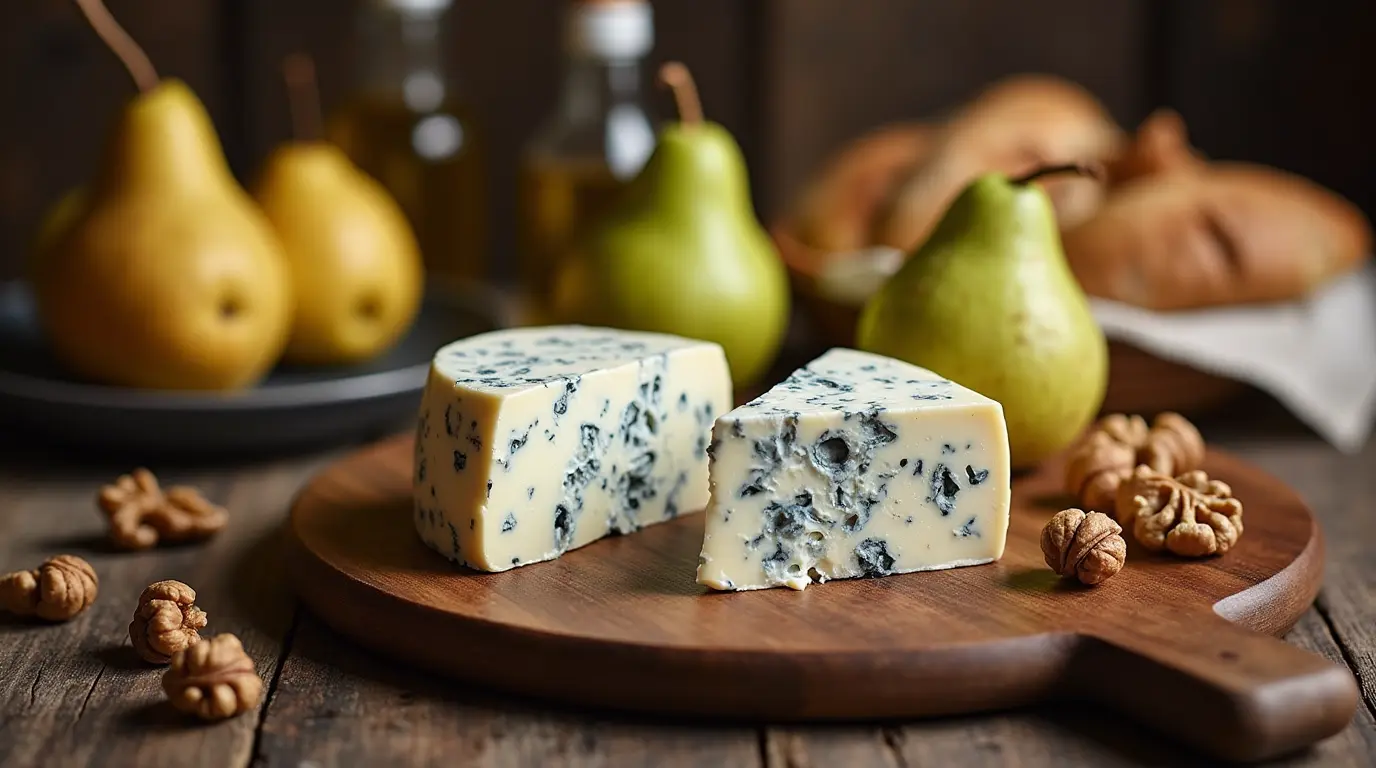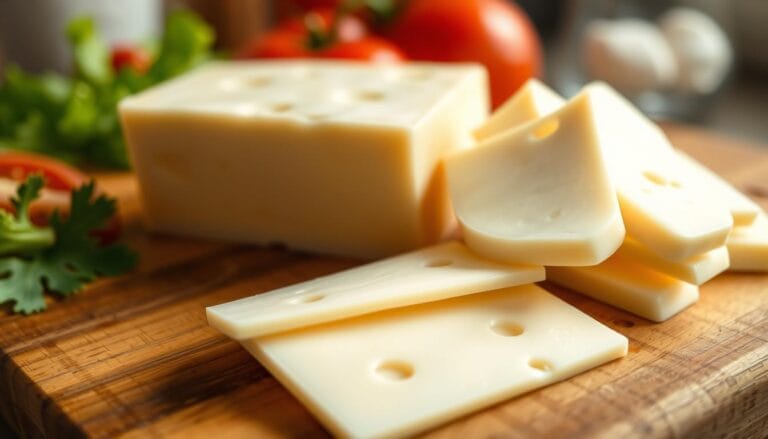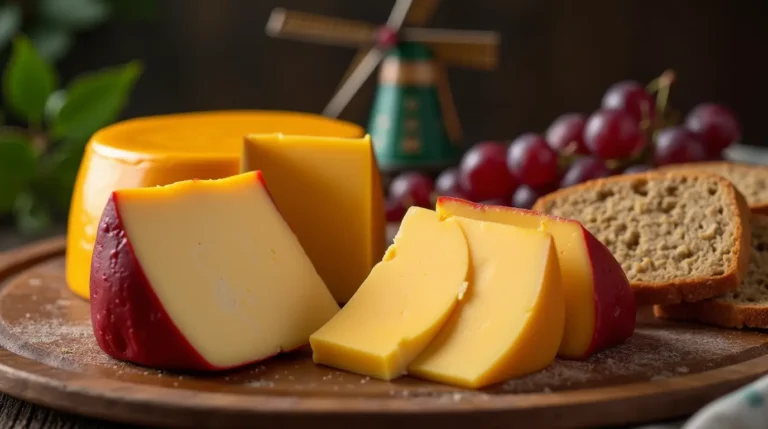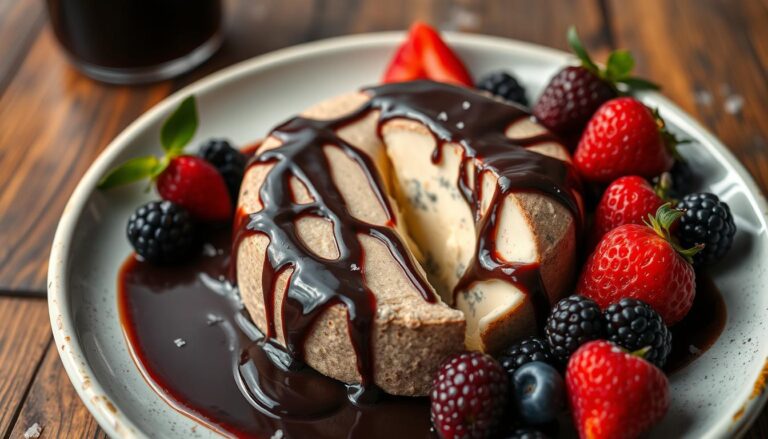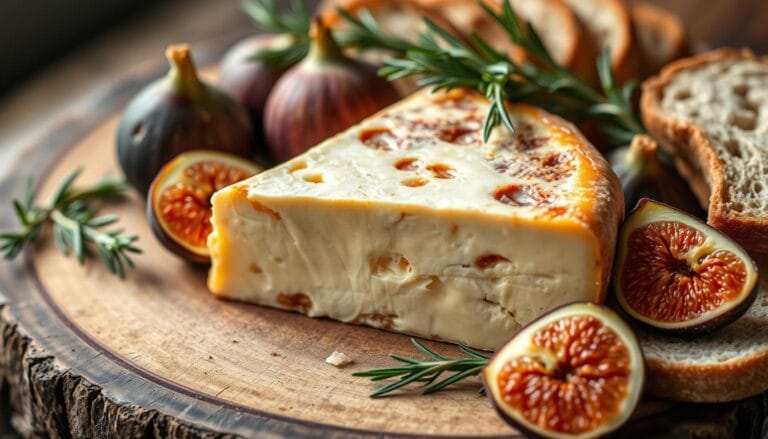Roquefort: Unveiling the Blue Cheese Elegance
For lovers of fine cheese, Roquefort holds a special place—a bold, tangy blue cheese with a rich history and unmistakable flavor. Known as the “King of Cheeses,” Roquefort has captivated cheese enthusiasts and gourmet chefs for centuries. But what makes it so special? From its unique way of being made to its perfect pairings and standing in gourmet cuisine, there’s a lot to explore.
Whether you’re a lifelong fan or experiencing its magic for the first time, this article dives deep into everything you need to know about this iconic French cheese.
Table of Contents
A Brief History of Roquefort
The story of Roquefort Cheese begins in a small village in southern France—Roquefort-sur-Soulzon—where this cheese has been made for centuries under strict rules to maintain its authenticity and quality. Legend has it that a young shepherd, distracted while watching over his sheep, left bread and sheep’s milk cheese in a cave. When he returned days later, he found the cheese now streaked with blue mold and tasting unlike anything he had experienced before. Thus, Roquefort was born.
Today, it remains one of France’s most beloved exports, earning its “Protected Designation of Origin” (PDO) status back in 1925. This means authentic Roquefort can only be produced in Roquefort-sur-Soulzon using milk from Lacaune sheep, aged in limestone caves specific to the region.
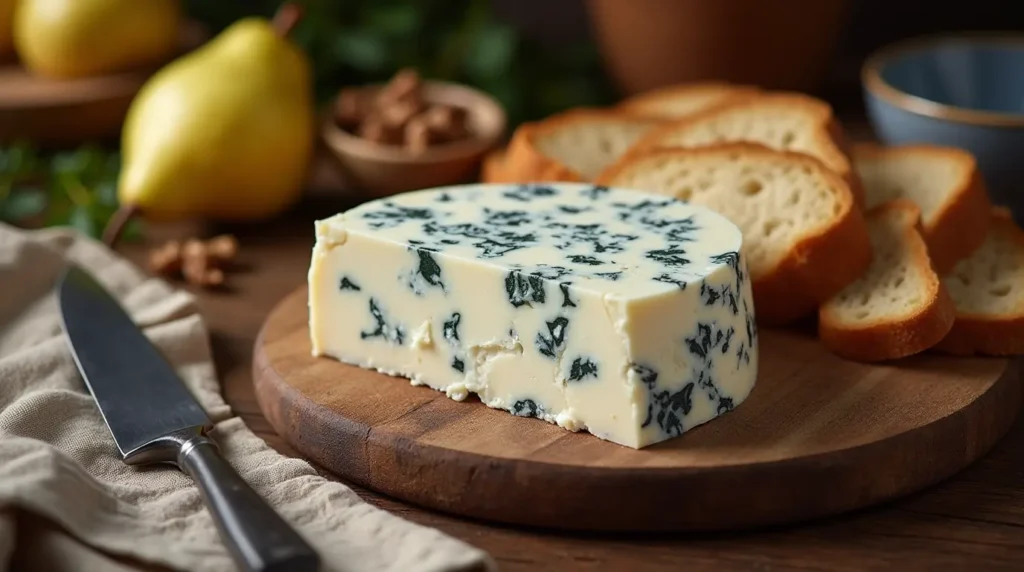
Why does this matter?
This rich history and dedication to tradition ensure that every wedge of Roquefort you try captures generations of craftsmanship and care.
The Art of Making Roquefort
Producing Roquefort is no random process—it’s a meticulous ritual passed down through generations.
The Key Ingredients
The process begins with raw milk from Lacaune sheep, known for their creamy, high-quality milk. This milk is collected within a 100-kilometer radius of Roquefort-sur-Soulzon, ensuring the cheese maintains its distinct regional character.
The Role of Penicillium Roqueforti
Here’s where the magic happens. Roquefort gets its blue veins and signature tangy flavor from a unique mold called Penicillium Roqueforti. Found naturally in the caves of Roquefort-sur-Soulzon, this mold is carefully collected and added to the cheese curds, creating the blue-green marbling as the cheese ages.
The Aging Process
After the cheese is shaped into wheels, they’re placed in limestone caves with naturally cool, humid conditions that are perfect for aging. These caves allow the flavors to mature while the cheese develops its creamy texture and signature pungency.
“We often say Roquefort isn’t just aged—it’s nurtured,” says Jacques Laurent, a cheese affineur. “The cave environment, the shepherd’s milk, and patience create a complexity no other cheese can replicate.”
This traditional, artisanal process is what sets Roquefort apart, making it a true masterpiece.
Flavor Profile and Perfect Pairings
What Does Roquefort Taste Like?
Roquefort is bold, creamy, tangy, and slightly salty. It has a melt-in-your-mouth texture balanced by a sharp, earthy kick from the blue veins. The aroma? Pungent and distinct—there’s no mistaking it for any other cheese.
This complexity makes it a standout choice for cheese lovers looking for a bit of luxury with every bite.
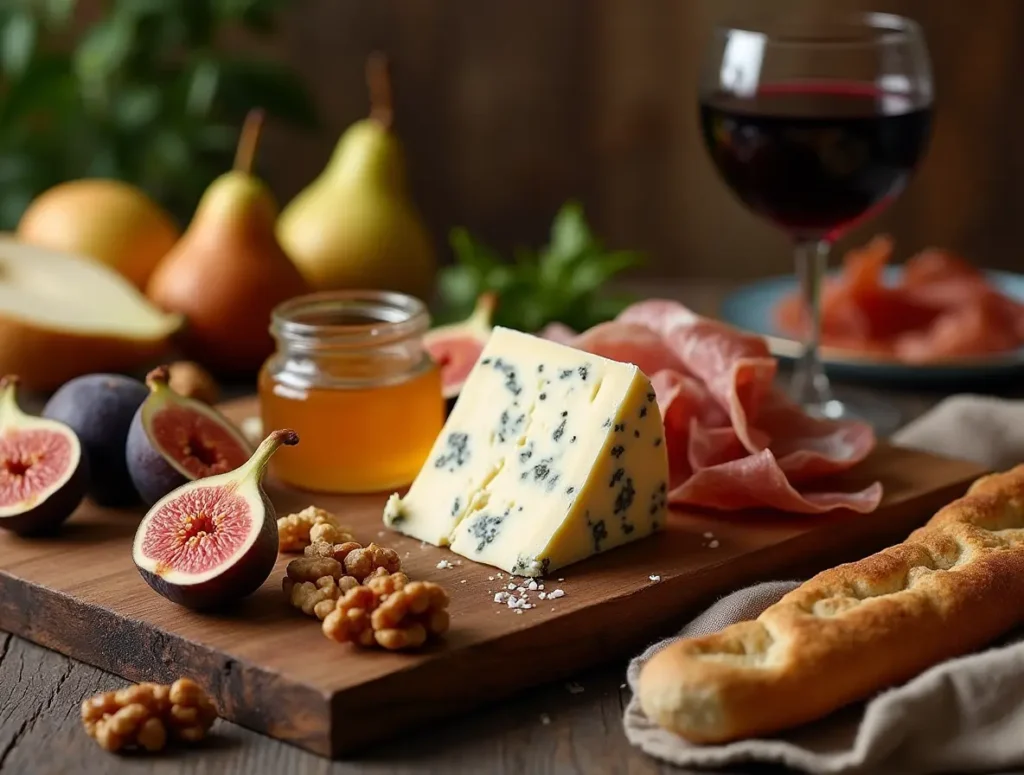
How to Pair Roquefort Like a Pro
Whether you’re serving it for a special occasion or enjoying it on a quiet evening, perfect pairings elevate Roquefort’s intricate flavors:
- Foods to Serve: Pair it with honey, figs, or pears for a sweet contrast to its saltiness. Add it to a charcuterie board alongside prosciutto, nuts, and crusty bread.
- Recipe Ideas: Spread Roquefort on warm baguette slices, crumble it over a salad with walnuts, or melt it into a rich sauce for steak.
Sommelier Isabelle Morel summarizes it well, saying, “The boldness of Roquefort needs balance—a hint of sweetness in wine or the right seasonal fruit creates a perfect bite.”
Surprising Health Benefits of Roquefort
Cheese lovers, rejoice—Roquefort isn’t just indulgent; it offers some health perks when eaten in moderation.
- Rich in Nutrients: Roquefort is packed with calcium, protein, and essential vitamins like B12. These nutrients contribute to bone health and energy production.
- Supports Gut Health: The presence of Penicillium Roqueforti may have potential benefits for gut health, promoting good bacteria.
- Heart Health: Research has linked fermented foods like Roquefort to potential heart health benefits, thanks to its bioactive compounds.
Nutritional Breakdown of Roquefort Cheese (Per 100g)
| Nutrient | Amount | Why It Matters |
|---|---|---|
| Calories | 369 kcal | Energy-packed for your cheese cravings! |
| Total Fat | 31.0 g | Adds creamy richness—but enjoy in moderation. |
| – Saturated Fat | 21.0 g | High—indulge mindfully for heart health. |
| Cholesterol | 85 mg | Something to balance with your diet. |
| Sodium | 1,380 mg | A salty punch—pairs well with sweet fruits! |
| Carbohydrates | 2.0 g | Almost negligible—great for low-carb fans. |
| Protein | 21.0 g | A solid protein boost for strength. |
| Calcium | 662 mg | Essential for bone health—cheese does it best! |
| Potassium | 120 mg | Small but beneficial for muscle function. |
| Vitamin A | 850 IU | Keeps your vision sharp and skin glowing. |
| Vitamin B12 | 1.3 µg | Supports brain function and energy. |
Key Highlights:
- Roquefort is a nutrient-dense treat but high in saturated fat and sodium, so savor it responsibly.
- Pair it with fresh fruits like pears, figs, or apples for a balanced experience.
- A true delight for cheese lovers looking for both flavor and nourishment.
According to nutritionist Emma Carlisle, “Enjoying a bit of Roquefort as part of a balanced diet can provide essential nutrients without overindulging.”
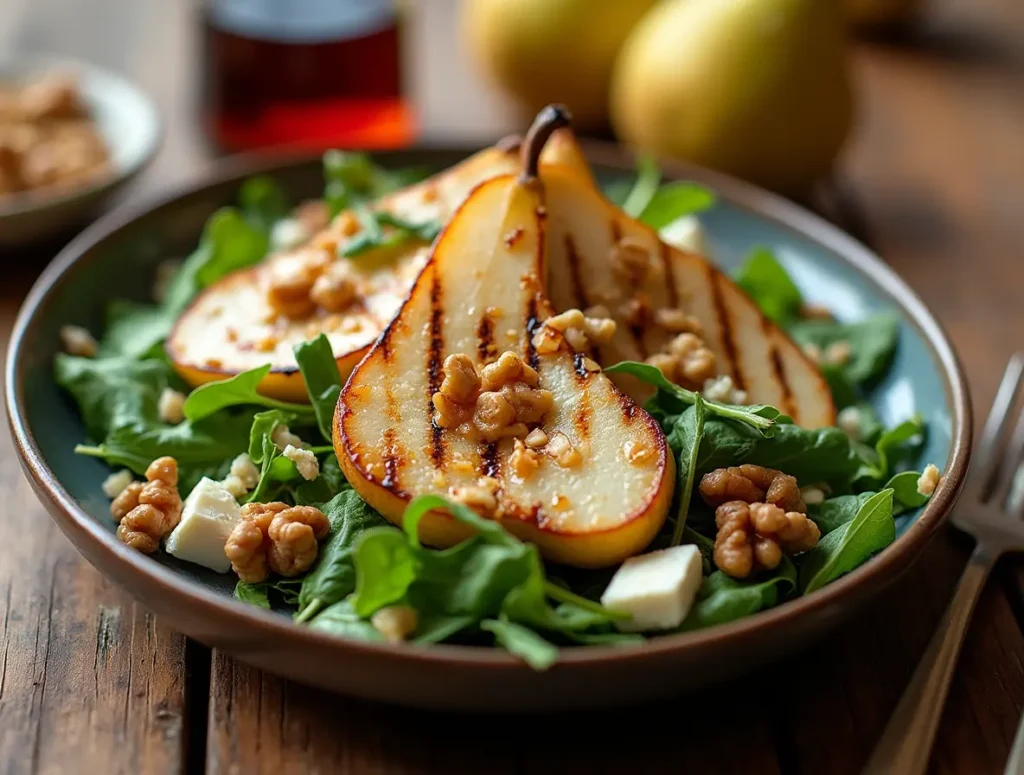

Roquefort in Gourmet Cuisine
Roquefort isn’t just a cheese—it’s a statement. Around the world, chefs use this blue cheese to transform dishes into unforgettable culinary experiences.
Iconic Dishes Featuring Roquefort
- Roquefort Soufflé: A light, airy dish that captures Roquefort’s flavor without overwhelming.
- Grilled Pear & Roquefort Salad: Sweet, smoky pears marry perfectly with crumbled Roquefort and a drizzle of balsamic.
- Filet Mignon with Roquefort Sauce: A decadent steak dish elevated by the cheese’s creamy tang.
Michelin-star chef Alain Dupont calls Roquefort “the seasoning of gods,” noting its ability to add complexity to both savory and sweet creations.
Want to experiment? Check out our recipe section [link to internal gourmet recipes].
Sustainability and Ethical Production
Roquefort production takes its responsibility to the environment seriously. Many producers follow sustainable practices like using renewable energy, maintaining high animal welfare standards, and supporting local sheep farmers.
According to sustainable agriculture advocate Marie Leclair, “Roquefort cheese-making supports not only the local environment but also a centuries-old tradition that thrives because of its ethical foundations.”
Buying authentic Roquefort supports these eco-friendly initiatives, ensuring future generations can enjoy this timeless delicacy.
Where to Find the Best Roquefort
Want the real deal? Here’s where to look:
- Specialty Cheese Shops (Fromageries): Local cheese shops often stock authentic Roquefort imported directly from France.
- Online Providers: Brands like Murray’s Cheese and Fromage offer authentic Roquefort delivered straight to your door.
- Travel Destinations: If you’re lucky enough to visit Roquefort-sur-Soulzon, explore its caves and buy straight from the source.
Supporting local fromageries ensures you get quality Roquefort while helping preserve traditional cheese-making methods.
Experience the Elegance of Roquefort
Roquefort isn’t just cheese—it’s an experience. From its artisan roots to its bold flavor and versatility in the kitchen, Roquefort continues to be a symbol of culinary artistry.
Whether you’re pairing it with a fine wine, incorporating it into a signature dish, or enjoying it all on its own, this blue cheese deserves a place on your table.
Curious about other gourmet foods? Explore our articles on cheese varieties or discover gourmet recipes to elevate your next dining experience.
Say it with cheese—share your Roquefort stories in the comments below!
Frequently Asked Questions About Roquefort
What is the origin of Roquefort cheese?
Roquefort originates from the South of France and is traditionally aged in the natural caves of Roquefort-sur-Soulzon, giving it its distinctive flavor and texture.
Is Roquefort cheese made with pasteurized milk?
No, authentic Roquefort cheese is made using raw sheep’s milk, which contributes to its unique taste and character.
How should I store Roquefort cheese?
Roquefort should be stored in the refrigerator, preferably wrapped in wax paper or cheese paper, to allow it to breathe while preventing it from drying out.
Can Roquefort be eaten by individuals with lactose intolerance?
While Roquefort contains less lactose than many other cheeses, those who are highly sensitive should consult with a healthcare professional before consuming it.
What are the best ways to enjoy Roquefort?
Roquefort is incredibly versatile—it can be paired with fruits such as pears, used to enhance a salad, melted into a sauce for meats, or simply enjoyed with a fresh baguette and a glass of sweet or fortified wine.

